Style
Architect Elizabeth Diller Reveals How She Created an Immersive Gem World for a State-of-the-Art Cartier Exhibition in Dallas
The renowned founding partner of Diller Scofidio + Renfro takes us through her stunning exhibition design.
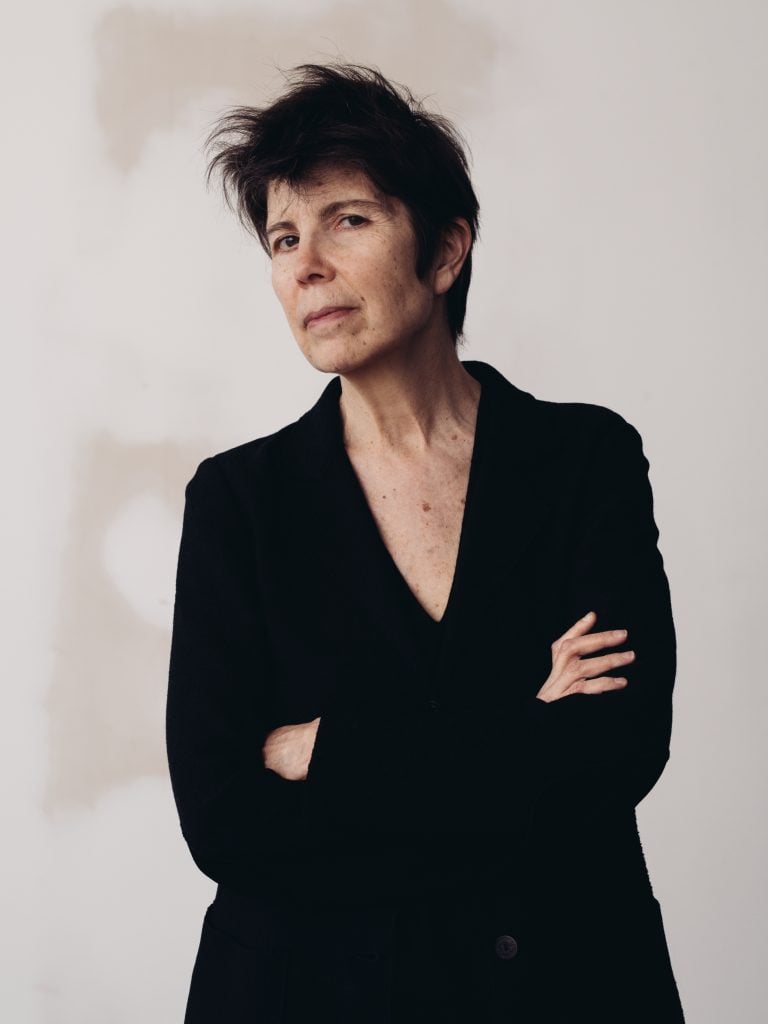
The renowned founding partner of Diller Scofidio + Renfro takes us through her stunning exhibition design.

William Van Meter in Partnership With Cartier

One of the many facets that has made the Dallas Museum of Art’s “Cartier and Islamic Art: In Search of Modernity” a blockbuster show is the exhibition design. At times it’s austere and ruminative, and then one turns a corner and enters an immersive gem world, courtesy of towering, super-high-resolution digital video screens. The interdisciplinary architecture and design studio Diller Scofidio + Renfro is responsible for the staging and video elements. The high-tech presentation heightens the curation of art and jewelry to be truly awe-inspiring.
Culture is intertwined with DS+R. The legendary firm has helmed the construction of art institutions such as the Broad and the Shed, and was behind the revitalization of New York’s High Line, amongst many other projects that have in recent times reshaped cities and the art world. The DMA’s senior curator of decorative art and design, Sarah Schleuning, worked closely with DS+R (the exhibit opened in May and runs through September 18). She was impressed with her collaborators.
“Their goal was always about the object and getting people to look closer,” she said. “What they added was always in service of the narrative.” The video components are particularly compelling. The exhibit is anchored by four rooms, each devoted to a solo magnificent Cartier piece flanked by behemoth 14-foot screens. Animated video of the jewelry zooms in, out, and around, giving attendees a look into the intricate universe hidden within.
“The objective is to both look at carefully and to reflect on the artifact,” said Elizabeth Diller, a partner in the namesake firm. “Our main goal is not to override and supersede the artifact, but to have a dialogue.” We chatted with Diller about her work on the run-up to the show’s finale.
How did you first become involved with “Cartier and Islamic Art: In Search of Modernity”?
We’ve had a long relationship with the Fondation Cartier in Paris, and we’ve done five installations in their galleries over the last 20 years. This came about out of our knowledge of each other and as a competition for the design of this exhibition in two locations. It would start at the Musée des Arts Decoratifs in Paris and then it would go to the Dallas Museum of Art. We had to imagine a cohesive structure and spatial narrative for both sites, which are radically different.
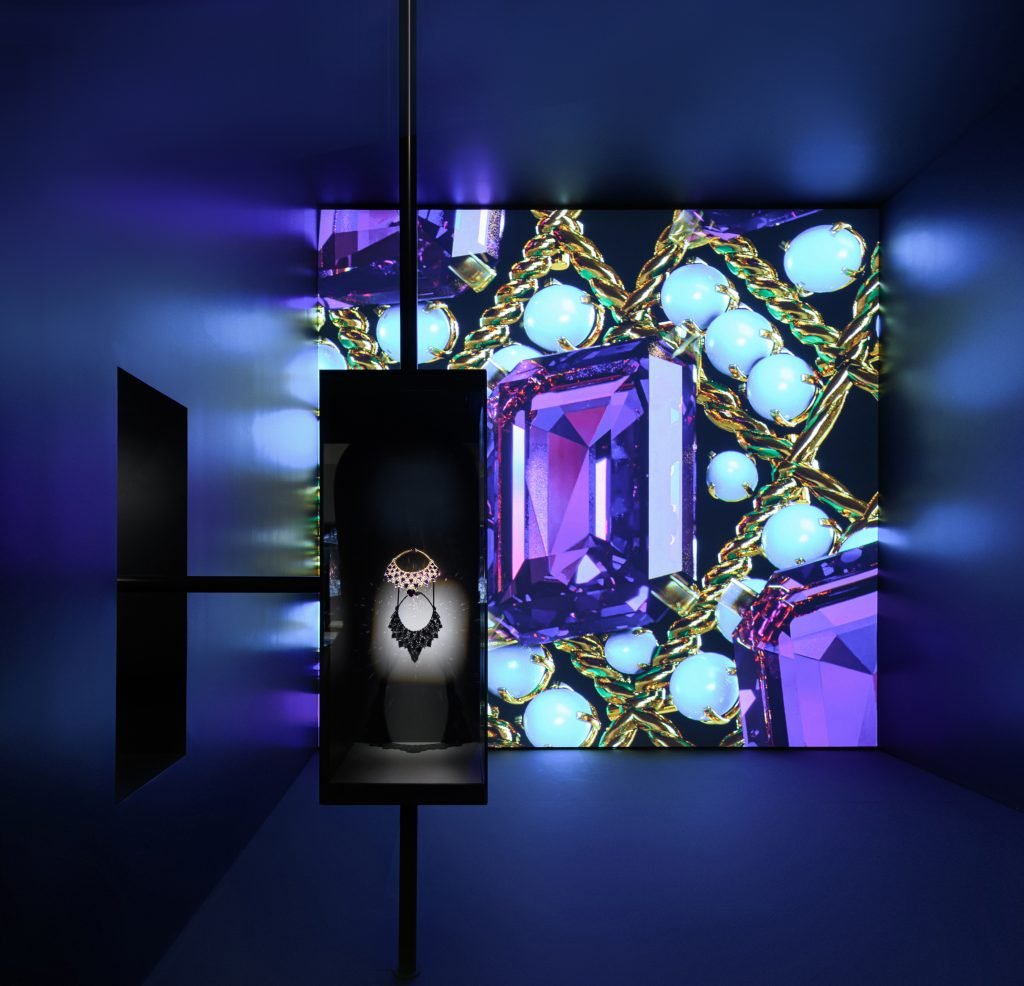
Diller Scofidio + Renfro’s animation gives an up-close view of Cartier’s opulent designs at the Dallas Museum of Art. Courtesy of Cartier.
I was unaware of Cartier’s connections with Islamic art, how the founder’s grandson Louis was so inspired by the European exhibitions highlighting it. It affected not only his collecting but also shaped the house’s designs. Were you familiar with these overlaps?
I always think that when I’m learning something from scratch, it actually brings out the best work, because there’s a big investment in thinking in a fresh way about something. I didn’t really know about the history of Cartier and its associations with Islamic art. It was illuminating and there were no preconceptions coming in, so it felt very fresh.
Tell me about your approach.
The first point of inspiration was not only the content of the show and the curatorial narrative, but also the challenge of dealing with small artifacts in a gigantic space. This sort of mismatch led to the anatomy of the show—playing with extreme changes of scale between the jewelry and its smallness on the human body and the gigantic space. The jewelry in and of itself would just be lost in the space, so we created these very large-scale video analyses of the pieces that would engage the public in a way that was really engaging to us as architects. The relationship between the parts and the mechanisms, it’s like they’re little machines to be worn. It was fascinating to understand the detail and the connections, to be able to take the components and put them back together again in a way that was engaging and not overly nerdy.
Typically in an exhibition of artifacts, videos tend to be didactic in a bad way. Our hope was to produce these moments of “exhale” in this extraordinarily dense show to allow the public to see something at a different scale, so that they could actually look even more closely at the artifacts.
The videos by DS+R really unlock the fact that the exhibit isn’t just exploring jewelry and the decorative arts, but also science and technology.
That’s an interesting point. We didn’t get so much into the gems and the geological aspects, but we did get into—and this is very pertinent to the Islamic influence—abstraction, geometry, and the mathematical. The moment it goes from a drawing on paper to artifact, connections need to be made to conform to the human body and to drape, to respond to gravity. So, to get from geometry to jewelry, there’s an aesthetic design component that’s very technical. You miss all of that when you simply look at the beautiful necklace on someone, you know?
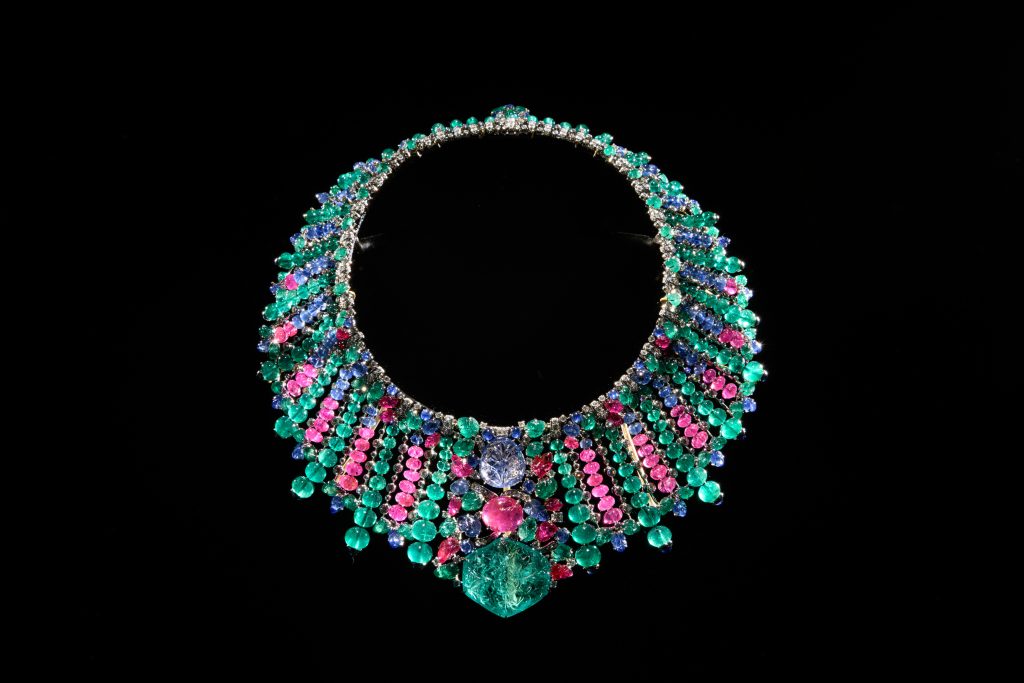
Islamic influences and perfection coalesce. Courtesy of Cartier.
It’s interesting that you were drawn to the hidden and what’s behind these jewelry pieces. I think most people would gravitate to the giant gems.
Those videos go from abstraction, from the pattern to the drawing of the piece into the materialization of it, and then take it apart anatomically, like you would a human body in terms of its systems, and then put it back together. Observing at a very large scale, you understand the incredible craftsmanship and the analytics that it took. I don’t know how they did it. Trial and error? To figure out how to make these and how they’re worn and the way they drape and the way they moved with gravity.
I love the “breathing necklace” video! Unless one has handled high jewelry, it’s hard to convey the weight and mechanics.
I’m not a jewelry person. I don’t wear a thing. No rings, nothing. This was plunging into something unfamiliar. I have the same experience with opera, and I decided to do an opera. It’s attacking the thing that for some reason you’re staying away from.
A layman has a really important viewpoint to share. They can see what’s fascinating about something and look in a different way.
You’re right. If you know too much, you miss some things that are very evident to the sort of unskilled mind, which could be fantastic. In many ways, I think we discovered things and we fell in love with some of these things, maybe for the “wrong” reasons—not the original reasons for which they were intended, but, you know, because they are such fantastic artifacts of design.
Was there a particular piece that really moved you that stands out?
You know, the [1948 gold and diamond] “breathing necklace.” The reason why we focused on that one, in its flat state, you could see pure geometry—absolutely fractal, perfect geometry on this necklace. When you look at it from above, when it’s flat, you see a drawing, something very 2D, and then, you know, this human form emerges from the flatness and then takes the necklace with it, and it begins to mold around the human form and respond to the gravitational pull. Now you see it as a familiar thing, a necklace on a female body, and then it holds for a couple of seconds.

The grandeur of geometry. Courtesy of Cartier.
These are movements in two directions. In other words, it’s a compound curvature. So it’s not just curling in one way, which is very easy to do with hinges, but it’s moving in two directions. It goes back and forth from its flat condition to its anatomical condition. And when it comes back flat, it falls perfectly back into the geometry, not a kink anywhere. It was a complicated piece to make it look effortless.
You are wielding state-of-the art video and animation techniques, and then added to that is ancient Islamic art. It’s humbling to compress this blur of centuries and cultures.
In a way, that’s why the shows have been a success. This is a fairly esoteric topic for the general public. A different way of viewing through technology really helped. The curators’ insight was very important to us. These Islamic patterns are contemporary. There are pure geometries here. I saw it in a whole variety of artists from the 1960s onward working with geometric pattern and atmospherics in architecture that are a result of patterns, especially patterns that just extend outward—very different from Western decorative arts.
These are almost frameless patterns that go on to make infinite atmospheres. Sol LeWitt was the very first thing I thought of when we started working on this. In Paris, we made this installation, and we basically took the patterns of some of the pieces in the show and reverse-engineered them into their abstracted lines. Then we added mirrors on all six surfaces of the gallery wall, extending the pattern to infinity.
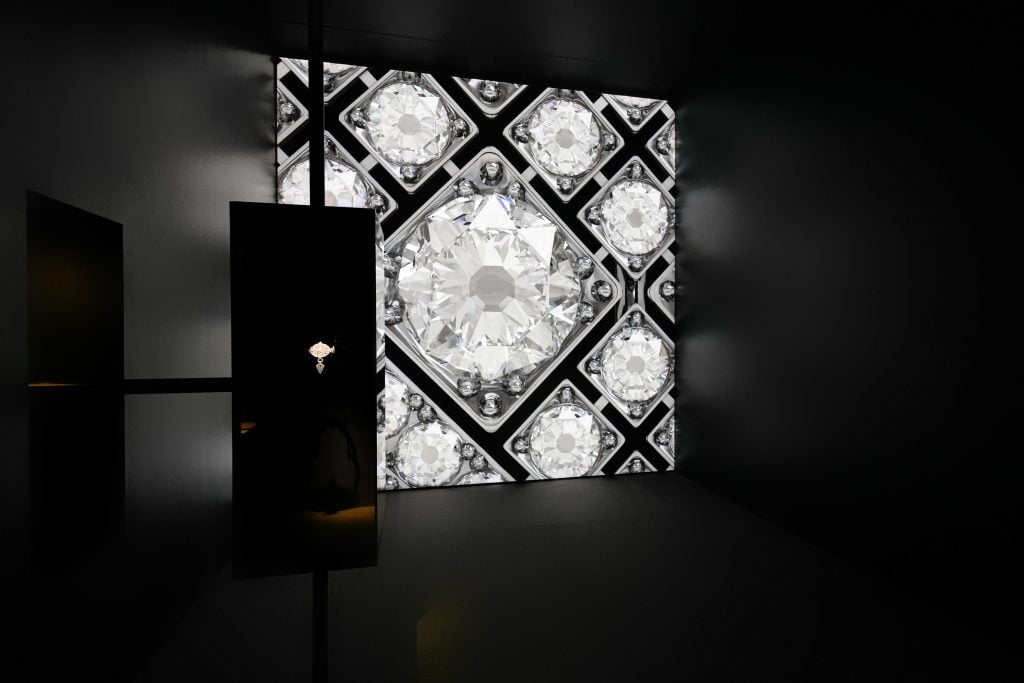
Enter the intricacy: DS+R’s animation gives an up-close view of opulence at the DMA. Courtesy of Cartier.
You and your firm have worked on so many museums, such as Boston’s Institute of Contemporary Art. Does designing these institutional spaces inform your exhibition concept?
Before we started designing museums, my partner Ric Scofidio and I were doing multimedia installations in galleries, independent work outside of the system of architecture as installation artist/architects. Then came some curatorial exhibitions, in parallel with starting our architectural practice. Sometimes we didn’t have a lot of artifacts to work with, and we had to produce spatial experiences in the context of shows with large curatorial content. We really did this throughout our career, doing independent work in art spaces, shows, exhibition design—even while designing galleries and museums ourselves. It gives us more insight into needs and possibilities. We designed two shows at the Metropolitan Museum, “Heavenly Bodies: Fashion and the Catholic Imagination” and “Charles James: Beyond Fashion.” We recently had a show at the Jewish Museum. These are the things that we just love to do, and each one is a topic that we learned from scratch. It’s just one of the parallel and interwoven elements of the work.
Did you ever have a eureka moment when you knew how you would approach the Cartier theme?
It all coalesced with this understanding of the radical scale difference. Without that, we wouldn’t have a show—we’d be moving elements around and following the curatorial story, but we wouldn’t have our own strategy for making decisions. With this realization, we could now see how you could tell different stories—even some of our own.
Later on we realized that we were the translators of translations. The Cartier designers didn’t see the artifacts in the locations where they were made, but instead in curated shows. There were so many interpretations of interpretations. I saw it as one more creative act, taking this original material through multiple filters. And ours was the latest one on top of the curators’.
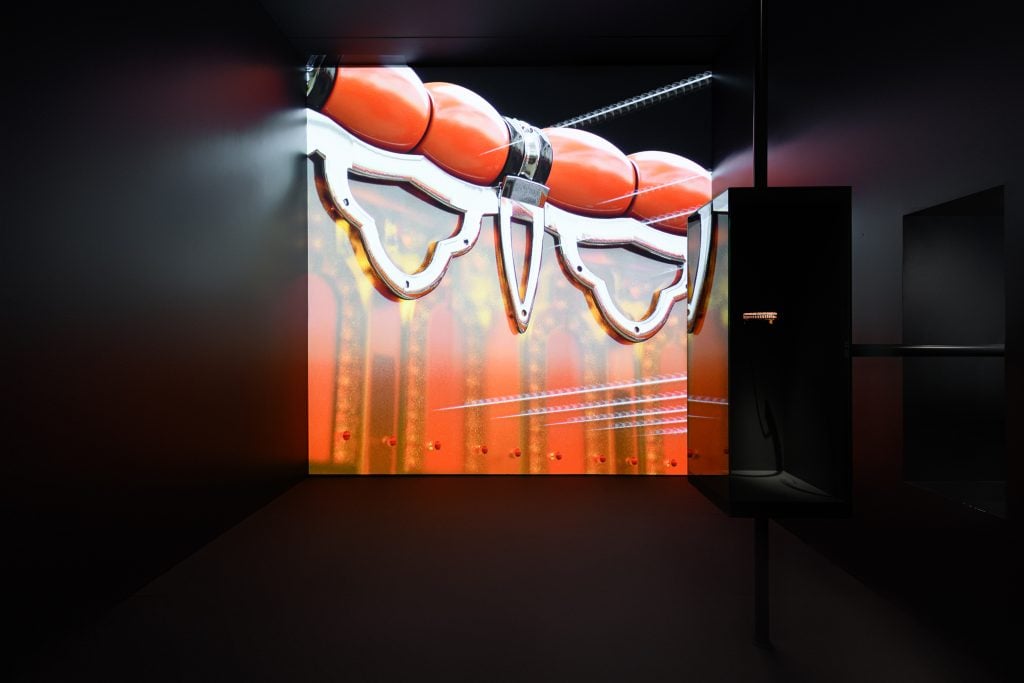
The complex inner workings of a Cartier bandeau are projected next to the original. Courtesy of Cartier.
This also ties back to communicating through centuries and connection to the past, which is a reason why museums are so amazing.
Oh, absolutely. It was such an interesting thing to do, to be able to travel in time and space and the unexpected connections the show made to so many people.
You have such a large body of work. How does this Cartier project stand out?
It’s hard to answer that. Each project that’s a challenge stands out. There are so many scars along the way, painful but also rewarding. Something new came out of this I never would have expected. Because we had no preconceptions, we made something that we never dreamed we would have made.
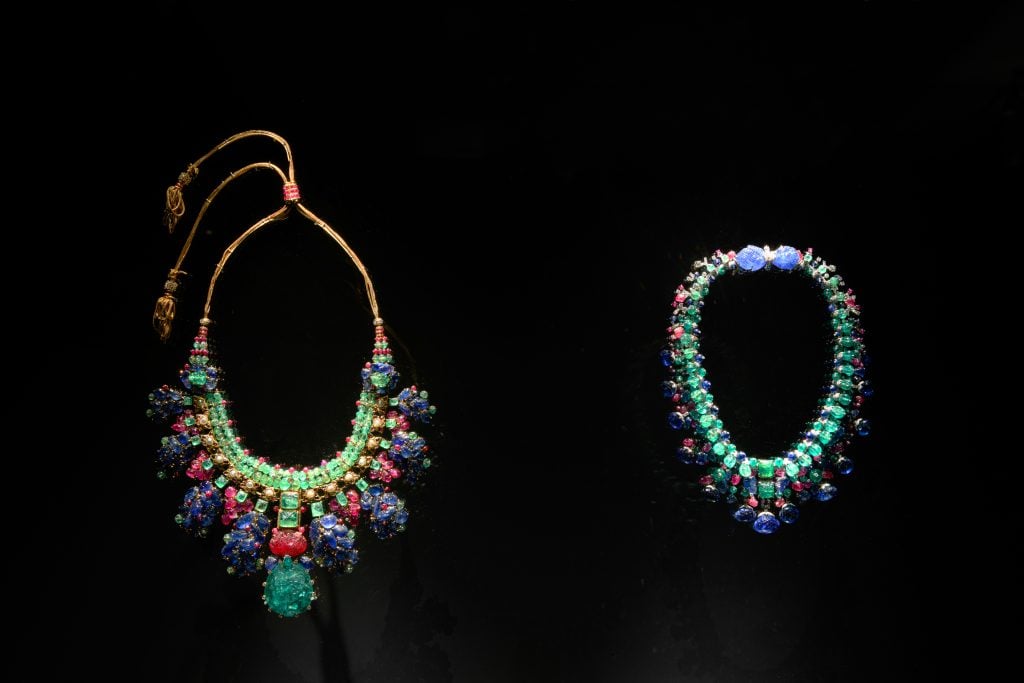
Timeless necklaces on display at the DMA. Courtesy of Cartier.
“Cartier and Islamic Art: In Search of Modernity” is on view through September 18 at the Dallas Museum of Art, 1717 North Harwood Street, Dallas, Texas.